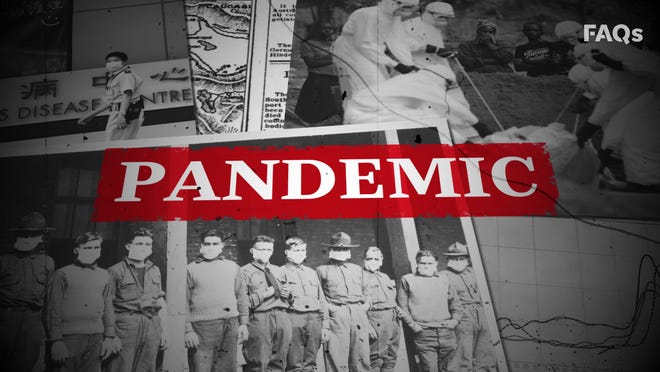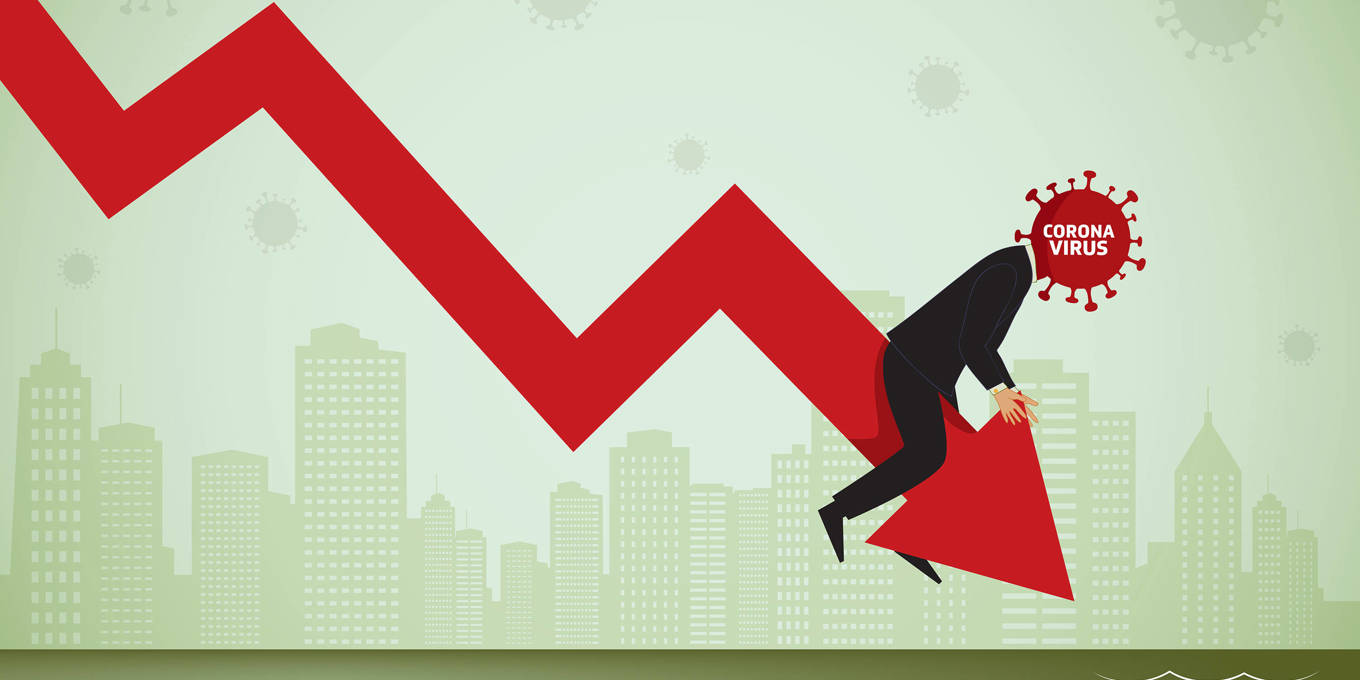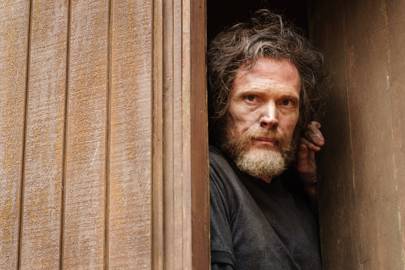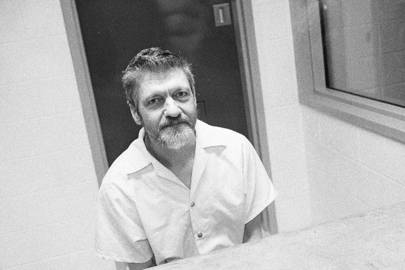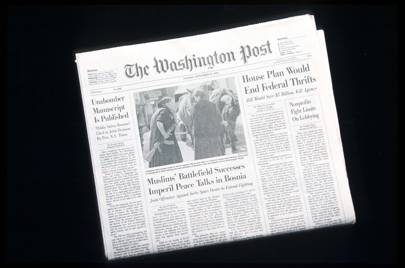A playbook that should govern America’s short-term reaction to the health crisis.
APRIL 2, 2020
Derek Thompson
Staff writer at The Atlantic
/media/img/mt/2020/04/The_Atlantic_033120_Final_2000x1125px_1/original.png)
SIMOUL ALVA
WE CANNOT LET THE CURE BE WORSE THAN THE PROBLEM ITSELF.”
With this tweet, President Donald Trump summarized a disturbingly common reaction to social-distancing measures. Texas Lieutenant Governor Dan Patrick expressed the same sentiment when he told Americans to “get back to work,” even if doing so means more death. Fox News commentators, likewise, have argued that Americans should break free of the shackles of quarantine to reboot the economy.
Call it the gospel of growth: the notion that Americans cannot afford to save tens of thousands, even hundreds of thousands, of lives, if it means sacrificing a quarter or two of gross domestic product.
While this might sound like an economic argument, it enjoys little support among economists. In a recent University of Chicago survey of dozens of prominent economists, almost all of them agreed with the idea that the economy would suffer if the U.S. abandoned “severe lockdowns” while the infection risk remained high.
Still, the growth evangelists are right about one thing. Severe lockdowns produce a parallel human misery—with millions of unemployed Americans, thousands of looming bankruptcies, and extreme financial anguish.
What are the economic rules of this upside-down world, where opening the economy too soon produces mass death, but shutting it down for too long produces mass suffering?
Over the past few weeks, I’ve asked a version of this question to a dozen economists. What follows is an attempt to distill their thoughts into four rules that should govern our short-term reaction to the health crisis. It is not just a rebuke to the gospel of growth. It is a new playbook for pandemic economics.
Rule 1: “Save the economy or save lives” is a false choice.
Last week, a group of economists from the Federal Reserve and MIT published a paper on the 20th century’s most murderous flu, the 1918 outbreak. Because the federal government in 1918 offered little if any economic assistance to suffering Americans, the local response from city leaders varied widely. Some places, such as New York and St. Louis, quickly ordered social distancing and other interventions, while others, such as New Haven and Buffalo, allowed public gatherings even weeks after the flu reached crisis levels. This variance gave researchers the ability to see which cities recovered the fastest after the outbreak.
“We were expecting that the areas with more [social distancing] would have a worse economy but less mortality,” said Emil Verner, a co-author of the paper and a finance professor at MIT. But early and aggressive interventions both saved lives and triggered a faster rebound in several measures, such as job growth and banking assets.
The infamous trade-off between people and GDP? It doesn’t exist—or, at least, it didn’t in 1918. The reason, Verner told me, is that pandemics are “so, so disruptive that anything that you can do to mitigate that destructive impact of the pandemic itself is going to be useful.” Without a healthy population, there can be no healthy economy.
This simple idea has some weird implications. “In a normal recession, you want to boost demand,” said the Northwestern economist Martin Eichenbaum. “But we don’t really want to boost demand in the very short run at all, right now. We don’t want United to be flying full planes. We don’t want restaurants serving food to dine-in customers. We want everybody to stay in and hold on.”
It follows that we should—as incomprehensible as this may sound—hope for a deep, short recession, caused by a cliff dive in many forms of economic activity. That would be a clear signal that people have gone home and that the face-to-face economy has been shut down to limit the spread of disease.
“The question I would ask of our leaders is: What will you regret?” Eichenbaum said. “Will the government regret that it didn’t save money in early 2020? Or will it regret that we let a viral infection kill millions of people, which also, by the way, led to the death of a lot of great companies? It’s pretty obvious what the worst-case scenario is. You want to err on the side of saving lives.”
Rule 2: Pay people a living wage to stop working.
In a pandemic, public gatherings are a kind of social pollution, and asymptomatic individuals who violate social-distancing rules are like factories that spew invisible carbon. “We can’t ask people to internalize health risks on an individual basis any more than we can expect polluting factories to self-regulate,” Eichenbaum said. “So governments have to freeze the economy and order people to stay home.”
But asking millions of able-bodied workers to stop working creates a crisis of unemployment for which the word unprecedented does no justice. On Thursday, the government announced that 3.28 million people had applied for jobless benefits in the previous week. That’s not just the highest weekly figure in recorded history; it’s roughly five times larger than the highest-ever figure in recorded history. In seven days, unemployment benefits rose by as much as they did during the first six months of job losses in the Great Recession.
Once the government has put the economy into an artificial coma, it must keep the patient alive. The U.S. economic-relief package does so in a few ways. Washington will send to most households one-time payments of $1,200 per adult—plus $500 per child—and expand unemployment benefits, bumping up weekly payments for eligible workers, including independent contractors and the self-employed, by $600 for the next few months. The new law also delays tax filing, suspends wage garnishing among those who have defaulted on their student loans, and establishes a four-month eviction moratorium among landlords with mortgages from federal entities, such as Fannie Mae and Freddie Mac. This is a huge and kaleidoscopic response. But it still might not be enough.
Denmark and other northern-European countries are taking a different approach. Their governments are directly paying businesses to maintain their payrolls to avoid the sort of mass layoffs and furloughs that are already happening across the United States. The chief benefit of this approach is that restaurants, factories, and so on don’t have to go through the bureaucratic rigmarole of firing thousands of workers and then rehiring them all when the economy bounces back (and those workers don’t have to waste time applying for jobs, either). They’re putting their entire economy in the freezer for three months.
Rule 3: Build companies a time machine.
The U.S. has about 6 million companies, according to the census, and 99.7 percent of them employ fewer than 500 people. Many of these small- and medium-size companies face extinction during the pandemic shutdown. While their income has evaporated, they still owe wages to workers and rent to landlords. This is a recipe for cascading bankruptcies.
If America’s small businesses begin to fail en masse, the damage will spread quickly throughout the economy. Just imagine the closed wine bars in Manhattan. Without money from thirsty New Yorkers, they can’t afford to buy more bottles from family wineries. Without commercial buyers, those wineries can’t buy new fruit from local grape growers, who can’t pay tractor manufacturers for new equipment. One sector’s problem quickly becomes every sector’s problem.
Financial markets may experience a parallel domino effect. If thousands of restaurants suddenly can’t make rent, their property owners might default on mortgage payments. When their banks suffer catastrophic losses, the financial system will seize up because nobody wants to lend anybody money. This is how a pandemic recession could become the Great Depression of the 21st century.
How do we begin to solve this impossible problem? The Federal Reserve has said it will pull all available levers to keep the financial system alive, by buying up government debt, corporate debt, and a variety of asset-backed securities. But something more will be needed to save America’s businesses.
We have to build companies a time machine,” Justin Wolfers, an economist at the University of Michigan, told me. He isn’t talking about the H. G. Wells contraption. He’s referring to anything—including grants, cheap loans, and debt relief—that would allow companies to shift their expenses to the future.
“My local burrito shop, which used to be a thriving business, could go belly-up any day now,” Wolfers said. “But in the post-coronavirus world, it should be a thriving business again. What that burrito business needs is what every business needs right now—a time machine to go from the present pandemic to the future.”
In the U.S. economic-rescue package, that time machine looks like $370 billion in low-interest loans backed by the government. Many businesses won’t have to pay back a cent if they use the cash to make basic expenses, like payroll or rent, and don’t lay off workers. As Slate’s Jordan Weissmann explains, private banks will make the loans to local companies with whom they already have a relationship, and the Small Business Administration will guarantee those loans—at least, until they run out of the roughly $370 billion.
Most economists I spoke with had the same reaction to the economic-rescue plan: Nice idea, too late, and too small. “This should have been passed three weeks ago, and it should have been much larger,” said John Lettieri, CEO of the Economic Innovation Group, a think tank and an advocacy group. Steven Hamilton, an economist at George Washington University, wrote that if the bill is intended to cover 11 weeks of payroll for all companies with fewer than 500 employees, the right figure should be closer to $600 billion. When the U.S. Senate returns to draft follow-up legislation, small-business relief will have to be at the top of the list.
Rule 4: The business of America is now science.
The new rules of pandemic economics are meant to guide U.S. policy during a period of weeks or months—not quarters or years. A three- or four-month freeze is one thing, but a full year of isolation and economic inactivity is untenable.
That brings us to the $100 trillion question: How do we get out of this? A lot more science.
Our lack of knowledge about the virus is our greatest weakness in combatting it. Not knowing who has the virus, or who is most susceptible, contributes to higher infection rates. Not knowing who has recovered from, and built immunity to, the virus delays our ability to treat individuals, or release select individuals from isolation. The possibility that the virus is anywhere means that we have to shut down economic activity everywhere. The road back to normalcy is through more clear and public information.
First, we need more tests, which can tell us where the virus already is. As The Atlantic’s Ed Yong explains, that means we need more masks, more nasopharyngeal swabs for collecting samples, more extraction kits to retrieve the virus’s genetic material, and more trained people to administer the tests.
Second, we need sophisticated tracing technology to tell us where the virus is spreading. “Contact tracing” means reaching out immediately to people who came into contact with an infected person, testing them, and recommending isolation if they test positive. While some countries’ tracing methods draw on mobile data in a way that might make Americans uncomfortable, Germany is looking to deploy a national app that has (for now) won approval from its health minister and data-protection commissioner.
In addition to coordinating a test-and-trace strategy, Washington should train its prodigious energies toward defeating the disease as fast as possible, by establishing billion-dollar prizes for vaccine and antiviral breakthroughs and by relaxing regulations to accelerate the approval of new treatments. After weeks of delay, the administration is finally using the wartime Defense Production Act to force manufacturers to produce ventilators and surgical masks.
We need to get people money, or they will die. We need to get companies cash, or they will die. But if we don’t clear the way for health-care workers to treat the sick, or for scientists to treat the disease, people and companies are going to die, anyway. There is no such thing as a normal economy until we contain the virus. But if we can’t contain the virus quickly, we might not have anything normal to return to.
DEREK THOMPSON is a staff writer at The Atlantic, where he writes about economics, technology, and the media. He is the author of Hit Makers and the host of the podcast Crazy/Genius.





